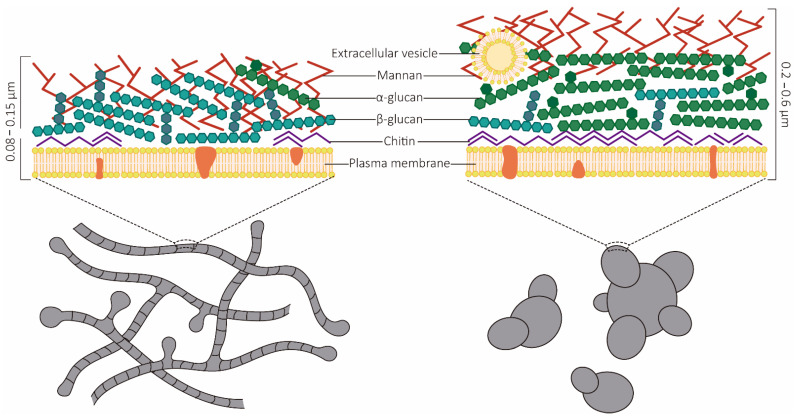Figure 3.
Schematic representation of the Paracoccidioides species cell wall. The ability to perform the dimorphic transition is an essential event for fungal establishment in the host system. This alteration is involved in major changes in the cell wall composition. The thickness of the filamentous form is approximately 0.08 to 0.15 μm, thinner than that of the yeast form, which is approximately 0.2 to 0.6 μm. The cell wall of the filamentous form is composed mainly of polysaccharides, such as β-glucan (most abundant), chitin, and mannan (less abundant). The yeast from the cell wall is constituted mainly of α-glucan and chitin (most abundant) and other polysaccharides, such as mannan. In general, the cell walls of both forms contain smaller proportions of amino acids, lipids, and proteins. The predominance of distinct O-glycosidic bond polysaccharides is essential for host adaptation, as β-glucans are recognized by the dectin-1 receptors of phagocytic cells.

